Next Halloween, remember this story, ‘Trick-or-Treat’
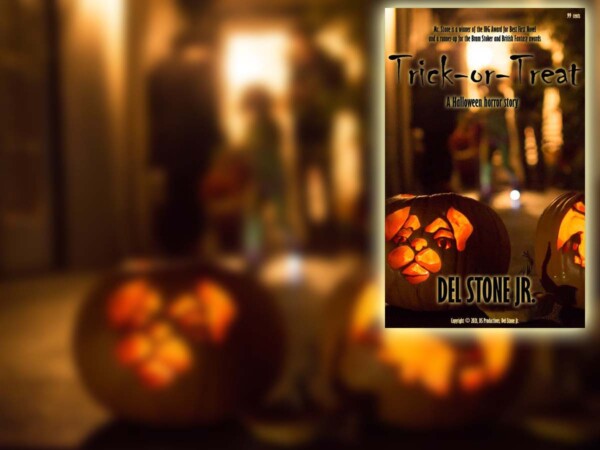
[ Cover image by Eugene Kim. ]
This is a short story, and it is short even for that. I say up front because I don’t want you to think you’ve been tricked out of your money (pardon the seasonal pun). At 99 cents, “Trick-or-Treat” is priced the lowest Amazon allows. If you don’t think a story of that length is worth a buck, please don’t buy this book.
Now, about “Trick-or-Treat”: I wrote the story back in the ’80s, and you’ll notice dated references to corded telephones and so forth. True story: The first cordless phone I ever saw was in the film “Terms of Endearment.” I remember thinking it was a trendy piece of technology I would never be able to afford, but a few years later I would own, and cherish, a Sony cordless phone.
I present to you the story as I wrote it, warts and all. I have not rewritten it or revised it in any way except to correct typos and misspellings.
Of the story I remember it was my first Halloween away from my parents. I had bought an old house across town and was a little nervous about being a homeowner. Suddenly I was responsible for a monster debt – $45,000 – and a huge obligation of repairs and maintenance. It meant I could not quit my job, nor could I suddenly up and leave for a job in another state. I was home “bound.”
The genesis of the story itself, I’m unsure of. The protagonist, Clifton, bears no resemblance to anyone I know either physically or spiritually. I have never experienced his kind of anger – I wouldn’t want to.
The story is set in the living room of that old house, and when I envision the activities taking place, they are framed by that house and neighborhood. I can see the yellowish door with the diamond-shaped window. I can see the tan shag carpeting, the sloped driveway, the buggy carport and the paint peeling from the frame.
I can even see Clifton standing in the living room during the climax that, to this day, shocks me and makes me wonder what the heck is wrong with a person who could think of a resolution so diabolical.
If you gave me your 99 cents (of which I get to keep 35; Amazon collects the rest), then I thank you and hope you enjoy “Trick-or-Treat.”
Think of it this coming Halloween.
Order a copy of “Trick-or-Treat” by following this link:
[ Cover image by Eugene Kim. ]
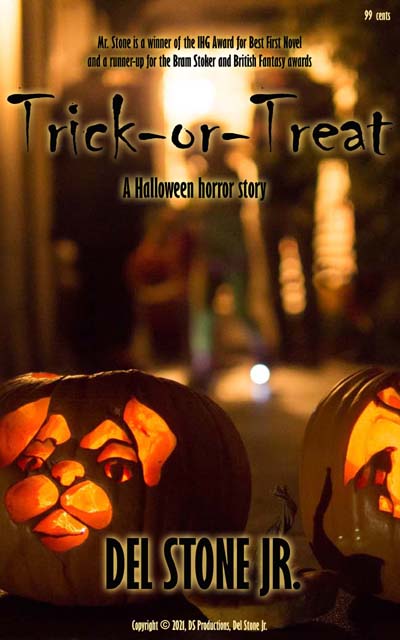
From Amazon
“While short enough to be called flash fiction, this story delivers the impact of a good horror story. Concise with no wasted words. Excellent read for Halloween.”
– Richard A. Bamberg, author of “The Hunters: Monster Hunting 101”
Trick-or-Treat: Revised, updated and enhanced with additional content, this micro-story punches far above its weight.
Clifton’s girlfriend Lisa has told him goodbye and he is not happy about it.
Not happy at all.
She said she needed space, and time. Clifton has no need of space or time, and now that Halloween is here, with all those happy kids ringing his doorbell and demanding candy, Clifton is ever reminded of his girlfriend, and her class of fourth-graders, and her young daughter, all of them gone now … or maybe not.
Because this Halloween, Clifton has a surprise for Lisa, and all the children in her life.
About the author:
Del Stone Jr. is a professional fiction writer. He is known primarily for his work in the contemporary dark fiction field, but has also published science fiction and contemporary fantasy. Stone’s stories, poetry and scripts have appeared in publications such as Amazing Stories, Eldritch Tales, and Bantam-Spectra’s Full Spectrum. His short fiction has been published in The Year’s Best Horror Stories XXII; Alfred Hitchcock’s Mystery Magazine; the Pocket Books anthology More Phobias; the Barnes & Noble anthologies 100 Wicked Little Witch Stories, Horrors! 365 Scary Stories, and 100 Astounding Little Alien Stories; the HWA anthology Psychos; and other short fiction venues, like Blood Muse, Live Without a Net, Zombiesque and Sex Macabre. Stone’s comic book debut was in the Clive Barker series of books, Hellraiser, published by Marvel/Epic and reprinted in The Best of Hellraiser anthology. He has also published stories in Penthouse Comix, and worked with artist Dave Dorman on many projects, including the illustrated novella “Roadkill,” a short story for the Andrew Vachss anthology Underground from Dark Horse, an ashcan titled “December” for Hero Illustrated, and several of Dorman’s Wasted Lands novellas and comics, such as Rail from Image and “The Uninvited.” Stone’s novel, Dead Heat, won the 1996 International Horror Guild’s award for best first novel and was a runner-up for the Bram Stoker Award. Stone has also been a finalist for the IHG award for short fiction, the British Fantasy Award for best novella, and a semifinalist for the Nebula and Writers of the Future awards. His stories have appeared in anthologies that have won the Bram Stoker Award and the World Fantasy Award. Two of his works were optioned for film, the novella “Black Tide” and short story “Crisis Line.”
Stone recently retired after a 41-year career in journalism. He won numerous awards for his work, and in 1986 was named Florida’s best columnist in his circulation division by the Florida Society of Newspaper Editors. In 2001 he received an honorable mention from the National Lesbian and Gay Journalists Association for his essay “When Freedom of Speech Ends” and in 2003 he was voted Best of the Best in the category of columnists by Emerald Coast Magazine. He participated in book signings and awareness campaigns, and was a guest on local television and radio programs.
As an addendum, Stone is single, kills tomatoes and morning glories with ruthless efficiency, once tied the stem of a cocktail cherry in a knot with his tongue, and carries a permanent scar on his chest after having been shot with a paintball gun. He’s in his 60s as of this writing but doesn’t look a day over 94.
Contact Del at [email protected]. He is also on Facebook, twitter, Pinterest, tumblr, TikTok, Ello and Instagram. Visit his website at delstonejr.com .
About this book:
“Trick-or-Treat” is a 756-word short story. It has never been published before.
The book’s total length is 3,516 words.
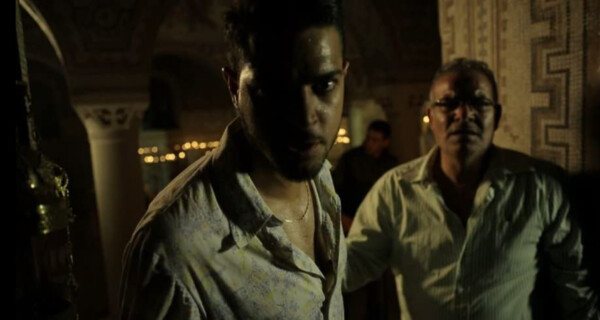
Image courtesy of Epic Pictures Releasing.
“JeruZalem” Starring Yael Grobglas, Yon Tumarkin, Danielle Jadelyn and Tom Graziani. Directed by Doran and Yoav Paz as The PAZ Brothers. 94 minutes. Rated R. Netflix.
Del’s take
The found-footage film has found a home in the horror genre, resulting in classics like “REC,” “V/H/S,” “Troll Hunter” and the grandwitchy of ’em all, “The Blair Witch Project.” It also has produced some amazing clunkers. “Paranormal Entity,” “Area 407” and “Apollo 18” come to mind.
Falling somewhere in between is “JeruZalem,” an unlikely pairing of the weighty and the frothy (Judgment Day from the point of view of a teen girl’s spring break getaway). How far it leans toward “Blair Witch” or “Apollo 18” depends on the moviegoer’s charity. While some people loath found footage as a lazy director’s approach to storytelling, others appreciate its clarity of viewpoint.
I find myself bouncing between those two worldviews. I think movies like “Troll Hunter” and “Cloverfield” are masterpieces of the genre. I even liked “Apollo 18” for what it was – a space-based horror flick with limited ambitions. But some movies don’t benefit from the found-footage viewpoint and “JeruZalem” may be one of them. Third person probably would have been a perfectly acceptable storytelling vantage point, and I would not have been distracted by irrelevant technical details such as how the lead character kept her device charged throughout the apocalypse.
I’ll probably be asking myself the same question about my phone after this Korea thing blows up.

In “JeruZalem,” young Sarah Pullman (Jadelyn) is whisked away from her overprotective and Skype-stalking father (Howard Ripp) for a whirlwind tour of the old city of Jerusalem during Yom Kippur. At the Tel Aviv airport they meet good-looking Kevin Reed (Tumarkin), an antiquities student who promises to hook them up with a hostel in the old city and show them the best clubs and sights.
There, they hook up with Omar, the young hostel owner, who takes them out for a night on the old town and stakes his claim to Rachel (Kevin has already targeted Sarah). They dance the night away as dear old dad vainly tries to Skype his daughter because he has been watching the news and hears that something weird is going on in Jerusalem.
The quartet discover the city has been quarantined and Israeli troops are battling – something. They hear gunfire, explosions and screams in the distance, not to mention an unearthly growling and screeching reminiscent of the time you accidentally shut the door on the cat’s tail.
From that point “JeruZalem” becomes an escape caper with the two American girls and their vacation boyfriends struggling to get out of the old city while monstrous events unfold around them.
The story is displayed from a pair of Google Glass-like eyeglasses that belong to Sarah, and yes, I would really like to know how she kept the damn things charged through her ordeal. My new phone will maintain a charge over a couple of days’ heavy usage, but then my phone has a battery the size of a Pop Tart. Sarah’s Glass didn’t – unless the Pop Tart was hidden in her blouse pocket.
The actors carried their parts effectively and there were no gaping holes in the plot, at least none I would try to drive a truck through. Special effects were acceptable and pacing matched the plot well enough. The found-footage viewpoint was not overly distracting, although at times the integration of technologies struck me as too seamless to be believed.
If I had a substantial criticism it would be that the storytelling mechanism trivializes the subject material. Mysterious stars in the sky over Jerusalem portending a religious disaster, sinister film footage smuggled from the Vatican showing the alleged execution of a demon, and air raid sirens that warn of something far worse than incoming Palestinian rockets are all gamely revealed through the lens of a silly pair of internet-capable glasses that display a frowny face and flash “fatal error” when dropped.
It’s all in the name of fun, however, and I confess I enjoyed “JeruZalem” despite its limited flaws.
I would give the movie a B- grade for its interesting premise, decent plot and pacing, and occasional (although sparse) flashes of genuine weirdness. I mark it down for its found-footage viewpoint, which did not serve the story effectively.
I watched it on Netflix.
Del Stone Jr. is a former journalist and author.
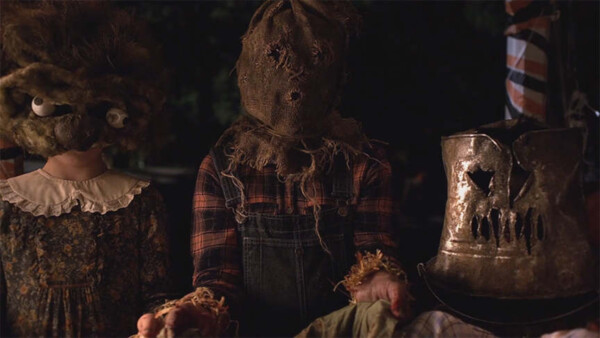
Image courtesy of IFC Midnight.
“Hellions” Starring Chloe Rose, Robert Patrick, Rossif Sutherland. Directed by Bruce McDonald. 80 minutes. Unrated.
Del’s take
My ever-present quest for those hidden gems of cinema, the obscure horror movie, recently carried me to “Hellions,” a new offering on Netflix. “Hellions” is hidden for a reason, although sadly I had to sit through it to find out why.
The movie begins promisingly enough. Seventeen-year-old Dora is planning a Halloween night liaison with boyfriend Jace at a Halloween party, but first she must drop by that pesky health clinic to see why she’s been summoned. Probably just want her to pick up a prescription or something.
Too bad it wasn’t BCPs because the doctor has news for Dora – she’s knocked up. That’ll sure take the fun out of a night of canoodling with your dope-smoking teen boy.
Dora decides to kick back at the house while her mom and little brother head out for a children’s Halloween party. But later, Jace calls and Dora changes her mind, partly because she wants Daddy Dearest to hear the news ASAP. As she waits for Jace to pick her up, the doorbell rings and a devilishly dressed moppet holds out a trick-or-treat bag.
That’s where the trouble begins, in terms of plot and the movie itself.
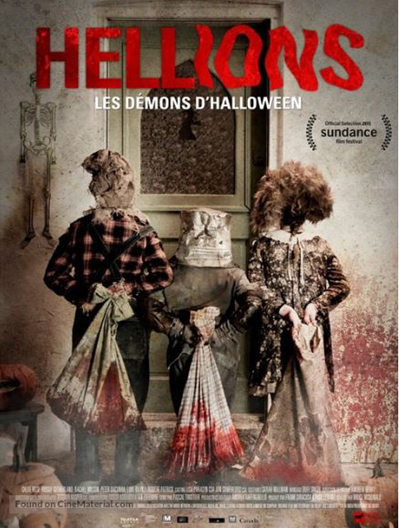
What follows is a near incomprehensible descent into … something. I’m not sure what to call it. A fever dream? Madness? An alternate universe?
Suffice it to say Dora and her unborn child, which is rapidly maturing within her belly into some kind of monster, become the targets of a cadre of demon children who want the baby whatever-it-is for something. I never quite figured that out.
I also never figured out the movie’s odd color palette – a kind of faux infrared – and it’s weird soundtrack. Oh, and I almost forgot the exploding pumpkins. Musn’t forget the exploding pumpkins.
“Hellions” is skillfully assembled in technical terms, and it shows flashes of originality and brilliance. But McDonald loses me, and what I predict will be most viewers, about 15 minutes into the movie when events become inexplicably strange, and not really very interesting.
I don’t want to discourage McDonald because I think if he reins in these excursions into visual excess, he should make some decent movies. But “Hellions” isn’t one of them.
I would give it a D+, and the plus is for the inventive costumes.
Del Stone Jr. is a former journalist and author.
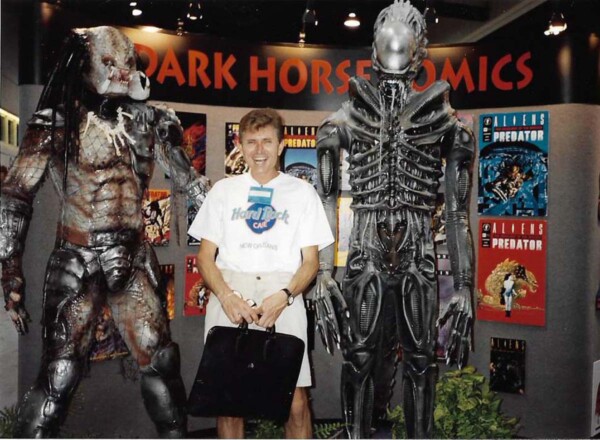
The author at the '94 San Diego Comicon. Image courtesy of Lurene Haines
In the summer of 1994 I participated in the San Diego Comicon as a guest. It was to be my first and last visit.
My credentials hardly qualified me as a “guest.” I went there largely on the coattails of cover artist Dave Dorman and his then-wife, Lurene Haines. I’d known Dave and Lurene since the early ‘90s; Lurene joined our science fiction-horror writers group, which at the time consisted of me, my friend Ray Aldridge, Ed Sears and his daughter Vicki, and Richard Bamberg. We usually met at a local saloon named Chan’s, which sat on the limb of a tranquil bayou. Our meetings were anything but tranquil. Fueled by too much beer, we raucously critiqued each other’s work, and usually extended the meeting to a nearby poolhall, Starcade. Sometimes Dave would join us. That’s how we met.
Lurene was constantly encouraging us to try our hands at scripting comic books. As a kid I’d read comics – in Spain, where there was no TV and precious little radio. We had no other option … well, I suppose I could’ve read a book, but c’mon! I was 6 years old. But as I grew older and passed through my TV-watching stage, I turned to books, and as I began writing my own stories it was in the narrative style of novels and short stories, not the scripted style of comics.
Still, when Lurene told us about the money to be made, I was tempted – especially when she floated a possible project with Marvel Comics. Seems their Epic imprint was looking for scripts for Clive Barker’s “Hellraiser” series. I’d read Barker’s “Books of Blood” and “The Hellbound Heart” upon which “Hellraiser” was based, and I knew the basic premise – successfully manipulate the Lament Configuration (and you could do so only if you were deservingly evil) and a lifetime of torment followed.




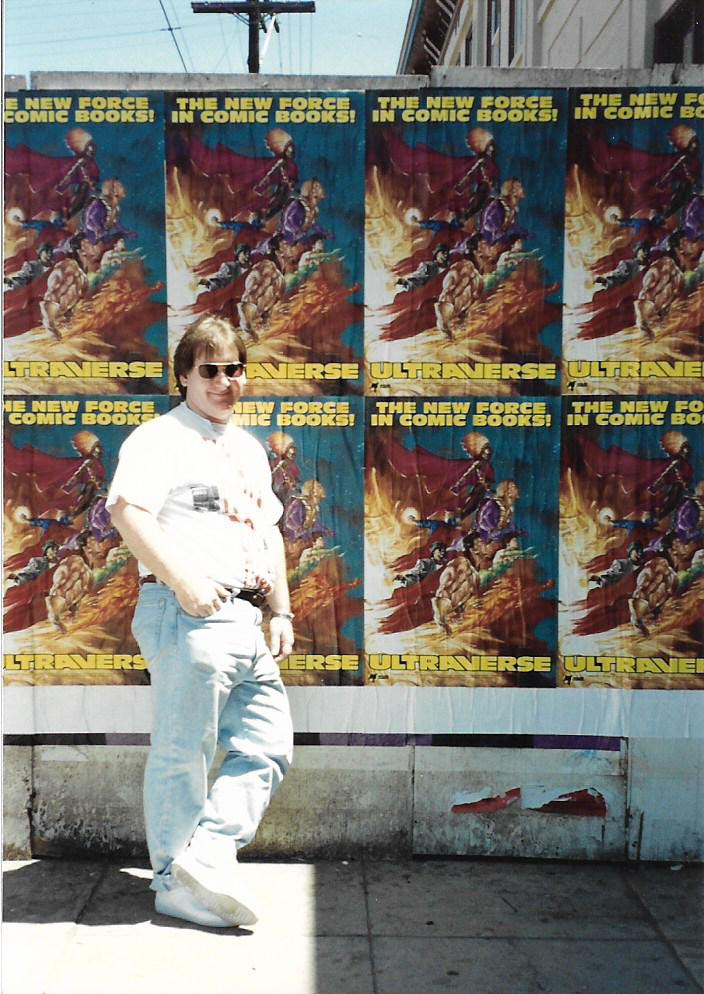
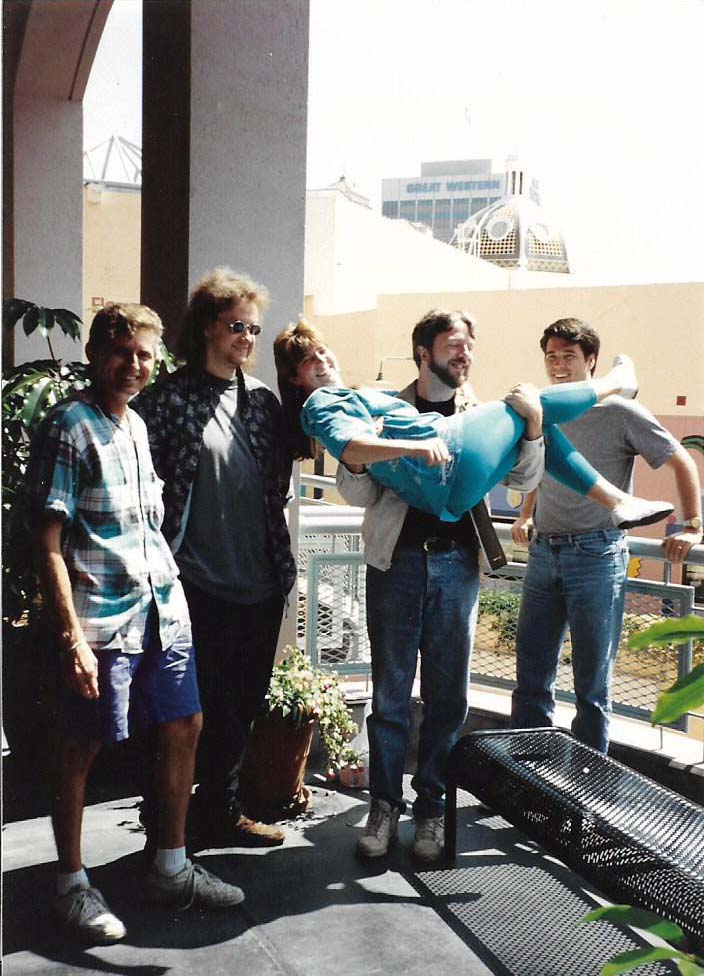
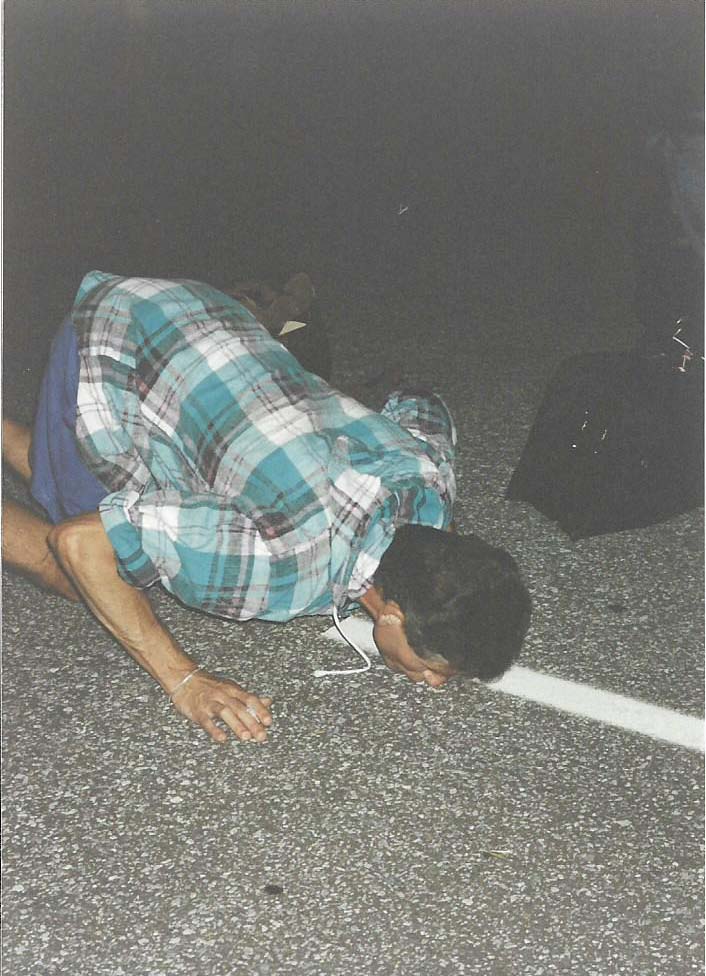
I sat down and wrote my first script, modeled on the style of a script Dave and Lurene loaned me. When I was done I gave it to Lurene, who submitted it with a script she had written for “Hellraiser” editor Dan Chichester. A few weeks later, voila! Both were accepted and suddenly I was a comic book writer. About the same time I sold my first short story to a professional publisher, Bantam-Spectra’s “Full Spectrum” anthology series. Now I as a dual-track writer – comics and prose.
A year or so later I was commiserating with Dave and Lurene about my future as a writer, and how I’d like to do the job full-time. They’d been encouraging me to take on more work in comics, and they wanted me to start going with them to conventions. I knew from experience that if you wanted writing jobs you had to attend conventions – that’s where you meet editors, make impressions, and get future jobs. It’s also where you learn about future projects that aren’t advertised to the public body of writers. That was one of my greatest frustrations as a beginning writer – it seemed a vast body of markets existed just beyond my reach, simply because I didn’t know about them, or hadn’t been invited to submit. And that was because none of these editors knew I existed. I didn’t attend conventions.
So I sat down with Dave and Lurene one afternoon and basically said “Yes, I’ll go to conventions with you. I want to get into comics.” Hence, my departure for San Diego one summer morning in 1994.
I really didn’t know how lucky I was – to have an entre to the professional world of comic book publishing at the hands of Dave Dorman, one of the greatest cover artists of our time … he opened far more doors for me than I deserved. I’ve never had a good opinion of myself as a writer. Bottom line? I’m not really very smart. Most writers I know are smart people who can not only come up with a story idea but conceive it both artistically and mechanically, something that was impossible for me to do. My approach was to jump in, see what worked, and rewrite – not the most efficient process. And if you asked what I was attempting to “say” with a particular work I likely couldn’t tell you. I just didn’t know. I didn’t know because I wasn’t very smart.
But I did know comic book artists were perhaps not the best storytellers – visually, yes. But plot-wise? Maybe not. Some were. But based on what I was seeing in contemporary comics, the stories to a large extent seemed thin, the artwork overpowering. So maybe there was a place in comics for a prose writer, even a lame, half-assed prose writer like myself.
You may remember in the late ’80s through the mid-’90s comics enjoyed a renaissance thanks to the collectibles market. We were part of that boom. There was good money to be made – excellent money – if you could get the work. And Dave was getting the work, so much he couldn’t keep up with it all. This was prior to the wave of comics-to-movies but you could see that coming down the road as science fiction, fantasy and horror inserted themselves into the popular entertainment medium. It really did look like the sky was the limit.
In 1994 Comicon was not the gigantic multi-media con it is today. Mostly it concentrated on comics and graphic novels. You did see the occasional celebrity but nothing like the extravaganza that just played out in San Diego.
Here are my impressions:
The flight to San Diego: I could never become a habitue of the convention circuit because I hate flying, and most of the big cons are located across country. Comicon is in San Diego. Chicago hosts another big comic convention. The World Fantasy, World Horror and World Science Fiction conventions travel around the country.
I remember the flight from Pensacola to San Diego as an endurance test of counting the minutes. In fact, it inspired me to write a short story, “The Fear of Fear Itself,” which was published in the Pocket Books anthology “More Phobias.”
As we were on final approach to San Diego International Airport, Lurene said, “Hey Del, look out the window.” I did, and all I could see were buildings – we were flying between skyscrapers! The airport sits in the middle of town, right on the water, and sometimes the approach takes you through buildings on the hills around the harbor. It was very scary for somebody who doesn’t like to fly.
The airport: I was astonished at how small the airport was. Space is at a premium in San Diego, and the tiny airport is a product of that confined area. Our plane didn’t even park next to a skyramp – we climbed down stairs and walked across the tarmac to the terminal, which was very dark and somewhat run-down. As I looked back to the airplane I saw a fluid dripping from one of the engines. Thank God I hadn’t seen that before we took off.
San Diego itself: Because of its small area for such a large city, San Diego is very tightly and efficiently laid out. It’s got lots of restaurants, hotels and shopping areas, including a very neat vertical shopping center, Horton Plaza, that lay within walking distance of the Westin San Diego, where we were staying.
Jogging with a DC editor: Every morning Lurene and I arose before sunup and went jogging with an editor from DC. I believe it was John Nee though I may be mistaken. He set a “brisk pace,” which is to say I was nearly exhausted by the time we finished. I remember talking with him in the hotel lobby one morning. I turned the subject to comic books and he very quickly said, “That’s work. Let’s not talk about work.” I learned at that moment many editors attend conventions to socialize, not network per se, and that knowledge served me well over the coming years.
The Convention Center: The San Diego Convention Center epitomizes what convention centers should be about. It’s a large, modern structure, right on the water, and becomes the focal point of the hotel, restaurant and shopping district. I also remember it being very hot inside – you cram 10,000 fanboys-girls into a confined space with multi-media platforms running at virtually every booth and you get some serious heat. I remember sweating the entire time I was there. I remember when I was there peeking behind a curtain at a Ford display of the new model Mustang. Interesting!
The fans: Even in 1994 the convention was packed! You could barely navigate the walkways and it was difficult to approach a booth. Many fans were dressed in costumes, which is not unusual. I’d attended enough conventions to become inured to that reality. Many of the costumes I couldn’t identify – I simply wasn’t that familiar with comics.
Kij Johnson: I met one other prose writer there, Kij Johnson. We were so relieved to run into one another. We chatted for a few minutes then went our separate ways, but it was nice to encounter a kindred soul of prose.
The celebrities: I encountered only two celebrities while I was there, Clive Barker and John Ritter. Barker was making his way through a crowd and I didn’t get to speak to him. You’ll laugh when I saw this, but I thought he’d be taller. Ritter was standing in the Westin parking garage with a passel of kids, waiting for his car to be brought to him by the valet. I didn’t get a chance to talk to him either.
The convention: I say this for the sake of honesty: I felt like a fish out of water. I was unfamiliar with the comic book monde and I knew none of these people. Lurene was pressuring me to “do business” and I’m sure any “business” I did was counterproductive as there was no way to disguise my ignorance. The extent of my comic book work consisted of one “Hellraiser” story and a novella titled “Roadkill,” published by Caliber. Consequently, nobody knew who I was either and they were not willing to waste time on an unknown quantity like yours truly. So I spent the first two days wandering the convention hall, picking up as many business cards as I could and talking to whomever would listen to me. It didn’t seem my time there was very productive yet I was spending a small fortune on plane fare, the hotel, and eating at pricey restaurants. So finally on Day 3 I said to hell with it and spent the day at Horton Plaza, shopping. I was exhausted and more than a little depressed. It seemed I had no place there and wouldn’t have until I’d educated myself about the world of comics, and published a few more projects. I spent one more day at the convention, basically accomplishing nothing, and thankfully we left the next day.
The ride back: The flight out of San Diego was turbulent. By this time Lurene had assumed the role of official Calmer of Del on the Plane Flight and spent the first 30 minutes assuring me these bumps and bounces were perfectly normal. My God, I couldn’t think of anything more awful than being trapped in a metal tube five miles above the ground with nowhere to go and nothing to do if anything went wrong. When we arrived in Pensacola that night I dropped to my knees in the parking lot and kissed the ground. It was the end of our convention travels for the year. I think they got a picture of that.
Shortly thereafter I suffered a kind of existential overload and temporarily called an end to my convention travels. Work was overwhelming, I was experiencing a great deal of turmoil in my personal life, and I was not happy with my writing life. Dave was getting me tons of work, but over time I began to realize that while my ego and my bank account liked comics, my heart belonged to prose. But all was not well in the prose world either. I was receiving invitations to themed anthologies, but found myself balking at the write-a-story-to-fit-the-premise requirement. Worse, I had just gotten access to the Internet and found myself wondering if the web would allow time in anyone’s day to read a book, and if reading itself would fall out of fashion. The prospects for a barely competent writer like myself making a living of novels seemed daunting at best.
Toward the end of the ’90s and into the 2000s, I found myself writing less. I was constantly distracted by online stuff, and the idea of sitting behind the computer for hours on end, doing something that was similar to what I did at work all day, struck me as unfathomable. I did manage to finish a novella which became a finalist for the British Fantasy Award, and I took a great deal of pride in that (although it was savaged by British critics). I managed to publish a short story here and there. But it seemed the momentum was lost. Today, I wouldn’t even know how to go about submitting a written work to a publication, and I know nothing about the self-publishing industry. Seeing as how that’s where books like “Twilight” and “Fifty Shades of Gray” came from, perhaps I should.
I always be indebted to Dave and Lurene for trying to help me.
But I don’t think I’ll be attending any more Comicons.
About the author:
Del Stone Jr. is a professional fiction writer. He is known primarily for his work in the contemporary dark fiction field, but has also published science fiction and contemporary fantasy. Stone’s stories, poetry and scripts have appeared in publications such as Amazing Stories, Eldritch Tales, and Bantam-Spectra’s Full Spectrum. His short fiction has been published in The Year’s Best Horror Stories XXII; Alfred Hitchcock’s Mystery Magazine; the Pocket Books anthology More Phobias; the Barnes & Noble anthologies 100 Wicked Little Witch Stories, Horrors! 365 Scary Stories, and 100 Astounding Little Alien Stories; the HWA anthology Psychos; and other short fiction venues, like Blood Muse, Live Without a Net, Zombiesque and Sex Macabre. Stone’s comic book debut was in the Clive Barker series of books, Hellraiser, published by Marvel/Epic and reprinted in The Best of Hellraiser anthology. He has also published stories in Penthouse Comix, and worked with artist Dave Dorman on many projects, including the illustrated novella “Roadkill,” a short story for the Andrew Vachss anthology Underground from Dark Horse, an ashcan titled “December” for Hero Illustrated, and several of Dorman’s Wasted Lands novellas and comics, such as Rail from Image and “The Uninvited.” Stone’s novel, Dead Heat, won the 1996 International Horror Guild’s award for best first novel and was a runner-up for the Bram Stoker Award. Stone has also been a finalist for the IHG award for short fiction, the British Fantasy Award for best novella, and a semifinalist for the Nebula and Writers of the Future awards. His stories have appeared in anthologies that have won the Bram Stoker Award and the World Fantasy Award. Two of his works were optioned for film, the novella “Black Tide” and short story “Crisis Line.”
Stone recently retired after a 41-year career in journalism. He won numerous awards for his work, and in 1986 was named Florida’s best columnist in his circulation division by the Florida Society of Newspaper Editors. In 2001 he received an honorable mention from the National Lesbian and Gay Journalists Association for his essay “When Freedom of Speech Ends” and in 2003 he was voted Best of the Best in the category of columnists by Emerald Coast Magazine. He participated in book signings and awareness campaigns, and was a guest on local television and radio programs.
As an addendum, Stone is single, kills tomatoes and morning glories with ruthless efficiency, once tied the stem of a cocktail cherry in a knot with his tongue, and carries a permanent scar on his chest after having been shot with a paintball gun. He’s in his 60s as of this writing but doesn’t look a day over 94.
Contact Del at [email protected]. He is also on Facebook, twitter, Pinterest, tumblr, TikTok, and Instagram. Visit his website at delstonejr.com .
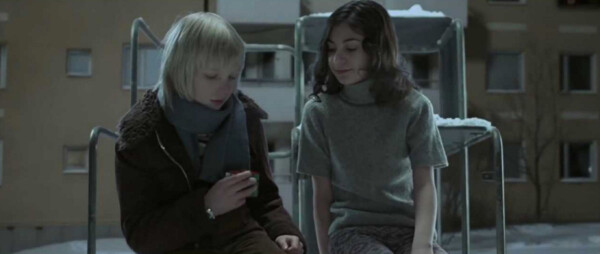
Image courtesy of EFTI, Sveriges Television and Filmpool Nord.
—
“Let the Right One In” Starring Kare Hedebrant, Lena Leandersson, Per Ragnar, Karen Bergquist. Directed by Tomas Alfredson. 115 minutes. Rated R.
Del’s take
You’re a 12-year-old boy and the bullies at school are eating your lunch. Wouldn’t it be nice if you could invoke the powers of your vampire girlfriend for a bloody session of attitude adjustment?
That’s the premise of “Let the Right One In,” a Swedish vampire flick that eerily and effectively reminds us that love comes along when it’s least expected, and from the unlikeliest of angles.
Oskar (Kare Hedebrant) is a pale, frail wisp of a boy who receives the unwanted attentions of a trio of bad boys at his school in the Stockholm suburb of Blackeberg. He fantasizes about revenge, sticking a knife into a tree and clipping newspaper articles about murders.
His home life isn’t much better. His parents are divorced. His alcoholic father lives in the country with a male friend while his mother works full-time and comes through the front door frazzled and worried. He spends much of his time at his apartment complex’s playground, dreaming of the escape he will never make happen.
He meets Eli (Lena Leandersson), the strange girl who has moved into the unit next door. She only comes out at night and seems impervious to the Swedish cold. Despite her pronouncement that she doesn’t want to be friends the two are drawn to each other, perhaps by their mutual strangeness.
Soon, bizarre murders haunt the streets of Blackeberg and Oskar, with Eli’s encouragement, stands up to his tormentors – the results are tragic. Still, “Let the Right One In” provides an option for hope.
But its most powerful virtue is the subtle elegance of its storytelling. “Let the Right One In” is flecked with moments of brutality, as any good 21st century vampire story must be. But it is also a serene journey through quiet, nighttime snowfalls, the unremitting gray of winter and the inevitable slide into dissolution that in this case is tempered by a weird redemption.
American audiences will not like the subtitles but never fear, in the tradition of “The Ring” and “The Grudge,” an Americanized version is due out this year.
“Let the Right One In” is not a movie for children or adults with timid constitutions. For everyone else it is a strange poem that will leave an uneasy impression that like water – or blood – love finds a way into the hardest of hearts.
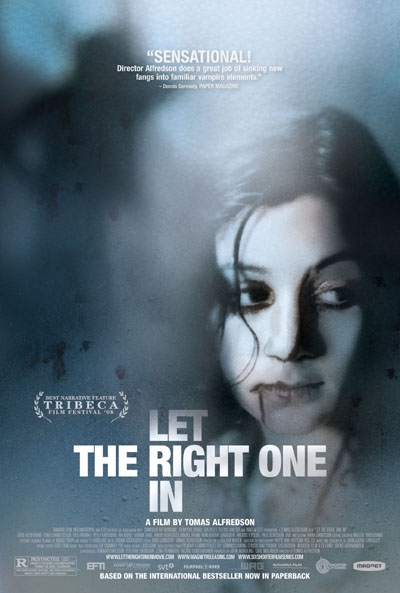
Mladen’s take
It’s clear by watching “Let the Right One In” that a vampire-friend would be useful if you’re the victim of bullies in middle school. Any middle school. Even a middle school in Sweden, where this very good, intermittently troubling film was made.
Before proceeding, let me stress that the penultimate scene in “Let the Right One In” offers one the finest pieces of cinematic slaughter ever created. Like much of the rest of the movie, its director, Tomas Alfredson, filmed the segment sparingly but punctuated it with bits of vivid dismemberment. The soundless incident was mesmerizing, not ghastly, though the victims were a couple of pre-teenagers and one adolescent.
“Let the Right One In” defies Hollywood-homogenized vampire film plots. It isn’t a sappy romance such as “Twilight” or a bloodletting similar to “30 Days of Night.”
It’s a movie about friendship, exploring the nature of honesty, loyalty, and trust. The protagonists are 12 years old but their struggles resonate with what we face as adults.
In one scene the dark-haired vampire cutie Eli accepts Oskar’s unvoiced gesture to enter his home, though he knows she must be invited verbally. Eli willingly placed her life in his hands by crossing the threshold and endured near-disintegration before he blurted “Come in” to end the horror.
Friendships have a darker side, too.
There’s the matter of making choices that close doors leading to other forms of happiness. There’s the urge to reciprocate. And, we inevitably become a little like the people considered friends.
Eli, shortly after the threshold incident, pounces on Oskar. She urges him too become more like her, something that, in fact, had been happening since the two met. Pay attention. At this moment and a couple of others, Eli’s young, creaseless face transforms, betraying the true age of her worn soul.
The movie ends with the impression that Eli had become more mankind-like and Oskar, more vampire-like, but both were human. Each of the two beings, it seems, had let the right one in.
Mladen Rudman is a former journalist and technical editor. Del Stone Jr. is a former journalist and author.

Image courtesy of Sony Home Entertainment.
“Ice Spiders” Starring Vanessa Williams, Patrick Muldoon, Thomas Calabro. Directed by Tibor Takacs. Amazon Prime. 90 minutes. Rated R.
Del’s take
Dude, didn’t we just review this movie?
Ski bums, bimbos and crazy old coots trapped at a ski lodge by a band of marauding. …
Wait … wait … it’s coming back to me. …
Sharks! That’s what I was thinking. “Avalanche Sharks.”
Except this isn’t “Avalanche Sharks,” not by a long shot, which is not a criticism of “Avalanche Sharks” though the movie deserves every bit of scorn I can shovel on its wriggling carcass.
This is “Ice Spiders,” an equally wretched presentation that nonetheless comforts me. All those bad feelings about none of my books being picked up by Hollywood? It ain’t because they suck. Maybe they don’t suck enough.
I’m trying to figure out who plagiarized whom because “Ice Spiders” and “Avalanche Sharks” are essentially the same movie. Change a few character names and you’ve got “Avalanche Spiders” or “Ice Sharks.” I actually prefer “Ice Sharks” as a title.
The plot goes something like this: Dan “Dash” Dashiell (Patrick Muldoon) is a ski instructor at a hidden mountain resort watching newbies to the slopes crash into each other on the bunny run. Once, he was an Olympics downhill hopeful, but a dreadful injury dashed those aspirations.
Dr. April Sommers (Vanessa Williams) is a biologist at a hidden military laboratory who is trying to make spiders bigger so they’ll spin more silk, which can be used to make bulletproof vests for the troops. But her boss, Professor Marks (David Millbern), has secretly amped up the growth hormones being fed to the spiders. See what they did there? They de-eviled Dr. Sommers, so that when the spiders escape the lab and start devouring the bunny run bumblers, she can sermonize about the evils of ambition (too bad it wasn’t corporate America – THAT I could believe).
Did I say something about spiders eating people? Oh yes, it’s a bloody arachnabuffet as killer spiders the size of Saint Bernards gallop across the ski runs, munching on those who aren’t aspiring Olympics downhill racers. You can see where this is going.
“Ice Spiders” has another quality in common with “Avalanche Sharks”: It too is a lo-fi cash grab by producers with modest aspirations. The script is dreadful, as is the acting (with the exception of Williams, who struggles gamely through the train wreck of dialogue as if she were trying not to laugh). The special effects are crappy even for CGI. And the plot is thoroughly, reprehensibly predictable.
I spent 90 minutes constantly checking the status bar to see how much time remained of this stupid flick. It was that bad.
Don’t blame me. Mladen chose this clinker. I give it a D-, which if memory serves is what I graded “Avalanche Sharks.”
I get to choose the next movie and if Mladen doesn’t step up his movie review selection game, I will punish him with another “Jane Austen Book Club.”

Mladen’s take
Del, you’re so off the mark with your review of “Ice Spiders” that I’m forced to conclude the following: You must think Trump is intelligent and human.
The difference between “Ice Spiders” (IS) and “Avalanche Sharks” (AS) is akin to the difference between Star Wars Episode 4 and Star Wars Episode 1. AS is a poor script wrapped by horrible acting and zapped in a microwave oven until everything explodes into a big, fat mess. IS is, well, not.
And, the star of IS isn’t Vanessa Williams. Hell, Vanessa Williams isn’t even Vanessa Williams. When the acting credits rolled at the beginning of the movie and Vanessa Williams’s name popped up, I thought, “Woohoo, it’s that Vanessa Williams. Miss USA. Singer. Model.” A 1980s bombshell, she was. Instead, I got a Vanessa Williams, the crappy actor and millennial, or whatever her generation moniker is, with, I must concede, decent cleavage.
IS avoids becoming AS because of the acting by Patrick Muldoon, who portrays Dash the ski instructor. He had, oh, panache. Muldoon converts dialogue that could’ve been utterly banal into something that seems close to plausible. His facial expressions and ever so slightly effete gestures as he delivers his lines adds a lighter mood to the film without turning it into a joke. Well done, Muldoon. You carried the day.
Muldoon’s performance is strong enough to overcome the movie’s weaknesses. But, Del, in one instance, is correct. The CGI spiders in this film are terrible. All six of them. They look like shitty animation added to a live-action film. Plus, the cockroaches in my kitchen are bigger than the spiders in the movie. I was far from terrified by the suspense of people placing themselves unknowingly in position to get attacked and dismembered. I take that risk every time I get up in the middle of the night to use the bathroom. My cockroaches are as big as helicopters and fly just as well. The practical effects in IS aren’t much better either, but they sure as hell are better than those in AS. At least the fake blood in IS was the color of blood. In AS, the blood was, I don’t know, a subdued fluorescent pink.
Also, you can’t overlook the political message in IS. The mad scientist uses the fascistic argument of national security to justify the spider mutation program, rationalize the deaths of fellow Americans, and openly threaten the lives of the survivors, if they said anything about the dangers they faced. Huh. Sounds like Trump and his justifications for his miserable COVID pandemic response.
“Ice Spiders” gets a B from me because of Muldoon’s acting, the production company’s insight to steal the plot from the very good movie “Deep Blue Sea” – enlarge an animal to get it to produce more of the substance you need to make a lot of money … I mean help humanity – and its R rating. Del gets an F for being Del in his review.
Mladen Rudman is a former journalist and technical writer. Del Stone Jr. is a former journalist and author.
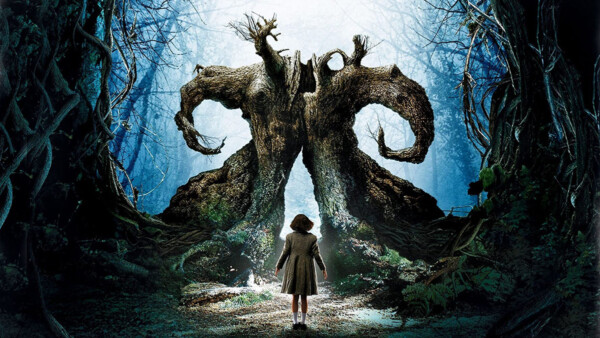
“Pan’s Labyrinth” Starring Ivana Baquero, Ariadna Gil, and Sergi Lopez. Directed by Guillermo del Torro. 119 minutes. Rated R.
Mladen’s take
Beautifully shot, captivatingly acted, the film “Pan’s Labyrinth” has to be more complex than what appears on the surface, as gripping as the surface can be.
At face value the movie is about a smart, upstanding 12-year-old girl descending into a fantasy world below and about the abandoned mill where she’s staying with her desperate mother and vile step-father, a captain in the Spanish army of fascist Generalissimo Francisco Franco.
It’s 1944 and the captain and his unit are mopping up communists hiding in the mountains. As he flattens a less-than-subservient suspect’s nose with a beer bottle, shoots others with his pistol and tortures a captured partisan, the captain’s pregnant wife ignores the bloodshed and prepares for child birth.
Her daughter tries to escape the horror through imagination. In her thoughts, she encounters Pan, the tattooed, goat-like guardian of a utopian kingdom long dead. He promises the girl eternal life and happiness, as long as she executes three deeds.
On the surface, “Pan’s Labyrinth” is about a girl turning inward to forget the brutal world engulfing her. Trouble is, her adventures in fantasy land aren’t all that wonderful. During her quest, the girl encounters all sorts of creatures – one beast, with drooping skin and eyes in the palms of its hands, eats two of the girl’s dainty fairies.
“Pan’s Labyrinth” strongly suggests, if not outright screams, that even the imaginary places we contrive for peace of mind are tainted by exposure to civilization. We’re viciously human even when we don’t have to be, though in this case the girl eventually journeys to a happier land.

Del’s take
What’s to understand, Mladen? This girl’s life really, really sucks.
Her name is Ofelia and she’s the quintessential stepchild – her real father was murdered by fascists, her mother has taken up with those very same fascists and Ofelia’s only escape is the brutal and scary fantasy world of Pan’s Labyrinth, which is about as much fun as a two-for-one root canal.
While performing the three tasks to prove her worthiness to Pan, Ofelia makes mistakes, disobeys orders, and brings pain and even death into her life … wow, sounds like a shopping adventure at Wal-Mart.
But what matters is where she’s at when the movie ends, and I guess it’s safe to say she’s in a better place.
What I took from this movie is that life – even a fantasy life – extracts its pound of flesh. Sometimes you have to go through hell to get to heaven. Sometimes it’s worth it.
“Pan’s Labyrinth” is dark by American standards but it reminded me that even a can of Spam can taste like a banquet when you haven’t had anything to eat in a long time.
Mladen Rudman is a former journalist and technical editor. Del Stone Jr. is a journalist and author.
Video
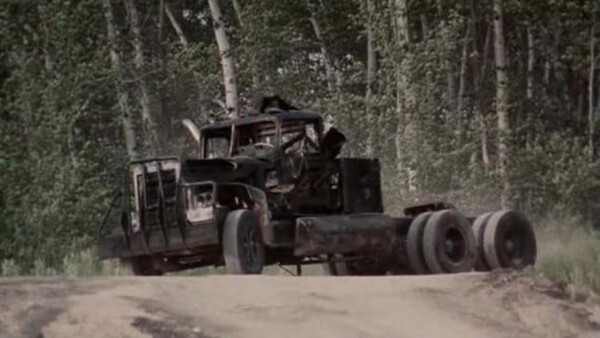
Image courtesy of Credo Entertainment Group and USA Pictures.
“Trucks” stars Timothy Busfield as Ray, Brenda Blake as Hope, Brendan Fletcher as Logan, Amy Stewart as Abby, and others. Directed by Chris Thomson. Rated PG-13 with a 95-minute run time. See it on Amazon Prime, Tubi, Apple TV and Vudu.
Mladen’s take
To recuperate my manliness after Del forced me to watch and review “Barbie” and “Wham!,” I made him watch 1997’s “Trucks.” And, what a film it is. From its big rig practical effects to the bonkers scene involving a Tonka-looking radio-controlled toy truck, the movie plows through your disbelief and eye rolling like a convoy of rabid Teamsters through a school zone.
Here, feel free to skip to the next paragraph. Del wants a movie summary in each review, so I’m giving you one, like it or not. “Trucks” is based on a Stephen King short story. In “Trucks,” trucks come alive, herding people into crappy buildings in a dusty town not far from Area 51. The trucks terrorize the huddled humans and, when needed, run over or otherwise murder a few. The self-driving, bloodthirsty machines, who talk to each other by flashing their headlights and switching windshield wipers on and off, are animated by … I’m not sure. The victims talk about mysterious satellite dishes erected at the nearby Air Force base, aliens attracted to Earth by SETI, a stolen election for president, the contents of Hunter Biden’s laptop, and, wait, I think I’m confusing one government conspiracy with another.
“Trucks” has flaws that go unremedied. There’s no nudity. The swearing is mild. The violence is not as graphic as it could’ve been, though the fire axe-wielding hazmat suit scene in a disaster response van is pretty damn terrific. And, let’s not forget the toy truck and mailman incident that unfolds about half-way through the film. It’s imaginative. It’s ridiculous. It’s carnage laced. In short, it’s perfect.
“Trucks” also has flaws that get remedied. For example, the killer trucks are autonomous but have no way of refueling themselves. So, through much of the film, I’m like, “Stupid rednecks, sit tight until the monstrous machines run out of gas.” Then comes along our principal scared, bewildered, and desperate protagonist (“Ray” portrayed by Timothy Busfield) who notices that the trucks had chances to kill him but didn’t. Why? Why did he live while some of his fellow captives died? Well, the trucks signal the answer to him. You see, Ray is the town’s gas station owner. The machines spared Ray because they needed him to refuel them. If he didn’t, they’d splatter his son and nascent girlfriend all over the desert sand. Come on, concede that’s a clever way for the trucks (and the movie’s plot) to overcome their lack of hands with opposable thumbs to pump diesel.
Because “Trucks” is based on a King short story and King often sways toward the bleak, the film’s ending is somewhat discombobulating. But, don’t worry, the ending is nothing like the heavily traumatizing conclusion of another movie based on King’s writing, “The Mist.”

Del’s take
I was confused.
Fifteen minutes into “Trucks” and still no Emilio Estevez. What the hell was going on?
A quick dive into the Internet Movie Database disabused me of my mental fog. “Trucks” is not “Maximum Overdrive,” the cheesy ’80s-vintage scifi-horror movie directed by none other than horror author Stephen King. Instead, “Trucks” is a cheesy ’90s-vintage scifi-horror movie based on the same short story, “Trucks,” that inspired “Maximum Overdrive.” And that story was written by none other than horror author Stephen King.
That’s about as clear as my soap-scum infused glass shower doors.
I’d describe “Trucks” as a genre hybrid, falling somewhere between a classic ’50s big bug movie and a Robert Rodriguez grindhouse gorefest, Why anybody thought “Trucks” was worthy of a remake escapes me, especially when King wrote many other memorable stories – the one about the guy who drinks bad beer and turns into a giant escargot comes to mind every time I pop the tab on a can of Natty Light. But then, why are there 27 “Children of the Corn”s or 91 “Lawnmower Man”s? The answer, of course, is that Americans have no bottom when it comes to schlock.
And that’s what “Trucks” is – schlock. It’s one of those movies that’s so bad, it’s good – except “Trucks” isn’t good. It’s terrible, and Mladen owes me big time. At least when I make him watch something out of his comfort zone it’s something decent, and good. “Trucks” is a Baby Ruth bar floating in the swimming pool of moviedom. The acting is awful. The script is laughably inept. No cliché is left behind. And there are plot holes big enough to … ahem … drive a truck through. It’s like watching political aides trying to teach Ron DeSantis how to eat pudding with chopsticks. In other words, it’s a mess.
Here’s an example of the breathtaking dialogue:
Teenage girl: “Why does everybody keep dying?” (Hmmm? Could it possibly have anything to do with the fact that they’re being RUN OVER BY TRUCKS?)
Old man: “I don’t know. I’m just an old hippie.”
??????????????????????
The trucks, we are told, have been brought to life by either Area 51, a toxic gas cloud, the Earth sailing through a comet’s tail, aliens … or maybe “Trucks” is a cautionary tale, warning against the unintended consequences of electing a fascist as president of the United States and then letting him skate when his crimes become public knowledge. Either way, I think everyone involved in the movie sailed through a comet’s tail because if “Maximum Overdrive” proves that horror authors should stick to writing horror stories and not directing horror movies, “Trucks” proves that even dedicated filmmakers can sometimes screw up, and “Trucks” is a Godzilla-sized Phillips-head of a screw(up).
Mladen didn’t assign a letter grade to “Trucks” so I’ll assume he’s giving it an F. I’ll be generous and award a D- seeing as how it’s truer to the short story than “Maximum Overdrive.”
When they come out with a scifi-horror movie titled “Night of the Killer Prius,” I’m there. But “Maximum Overdrive” and “Trucks” is a two-movie convoy of 18-wheeled schlock. For a vastly superior killer truck movie, check out “Duel.” Meantime, I’ll stick to the passing lane.
Mladen Rudman is a former journalist and technical writer. Del Stone Jr. is a former journalist and writer.
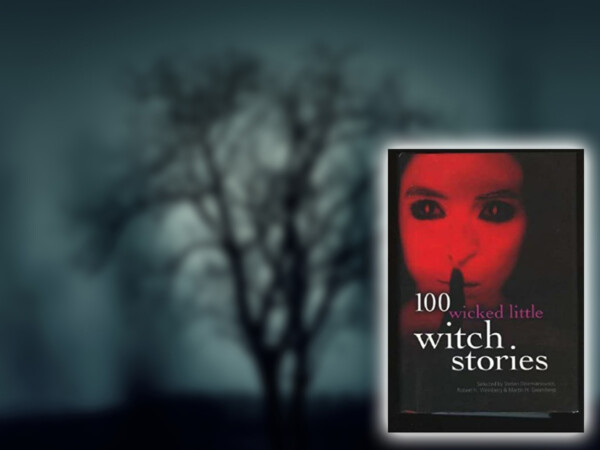
[ Main image courtesy of SplitShire at Pexels by way of a Creative Commons license ]
The genesis of my story, “I Feel My Body Grow,” in “100 Wicked Little Witch Stories” was simple: I wanted to sell a story to “100 Wicked Little Witch Stories.”
During the ‘90s writer and editor Stefan Dziemianowicz edited a number of anthologies for Barnes & Noble, all of them centered around very short stories. Seems publishers love short shorts, and I’m not sure if that’s because they can get more in each books or that readers prefer very short stories. As a reader I have no druthers either way, though I will pause before committing to a novelette or novella. I didn’t read Stephen King’s “The Mist” for many years because of that bias.
When I heard Dziemianowicz was editing a book of witch stories I tried to come up with something that would fit his premise. I knew nothing about witches except what I’d seen in movies or TV. I knew a couple of people who claimed to be witches but their witchhood had less to do with eye of newt and hair of bat but the whole Mother Earth and Gaia thing, which I dismissed as a New Age hippie trend.
What I wanted was a witch for the modern ages, maybe not an evil witch but one who was vengeful. I came up with just such a creature:
Cancer.
Cancer is the modern scourge. We think of it as evil though it has no conscious intent – it merely is.
But I asked: What if it did have conscious intent?
“I Feel My Body Grow” is the answer.
This is a creepy story and when I re-read it recently I was gratified to see it holds up well, from 1995 to this writing in 2023. I think it would make a terrific feature in a horror anthology movie like “Tales from the Crypt” or “Twilight Zone.”
I don’t believe “I Feel My Body Grow” will leave you lying awake tonight jumping at every sound. I do hope it stays with you.
Oh, and one more thing. This story was converted into a vlog, which is posted on YouTube. Check it out! Witchy voice and all. Follow this link.

From Amazon
“I admit that when I bought this book, I didn’t have very high expectations for it. I mean, I’d never heard of it before, but I took a chance and bought it anyway. And I loved it. The stories are all so different; some were funny, others were dark and foreboding, and some were exciting.“
– Chayleen Anderson
The witches who populate these 100 delightfully scary stories include practitioners of white witchcraft and devotees of black magic. Most are female, some are male, and a few are thoroughly unclassifiable. They can be born witches or made witches, and may mix simple love potions or volatile concoctions that threaten all we hold dear. Some resent not receiving the treatment they feel they deserve from lesser mortals; yet other witches don’t even realize that they wield any special influence at all. The many writers who take on this ever-fascinating character (so fundamentally human unlike her more paranormal, ghostly brethren) include Juleen Brantingham (“Burning in the Light”), Joe R. Landsdale (“By the Hair of the Head”), Simon McCaffery (“Blood Mary”), Terry Campbell (“Retrocurses”), Lawrence Shimel (“Coming Out of the Broom Closet”), and a coven of others.
About the author:
Del Stone Jr. is a professional fiction writer. He is known primarily for his work in the contemporary dark fiction field, but has also published science fiction and contemporary fantasy. Stone’s stories, poetry and scripts have appeared in publications such as Amazing Stories, Eldritch Tales, and Bantam-Spectra’s Full Spectrum. His short fiction has been published in The Year’s Best Horror Stories XXII; Alfred Hitchcock’s Mystery Magazine; the Pocket Books anthology More Phobias; the Barnes & Noble anthologies 100 Wicked Little Witch Stories, Horrors! 365 Scary Stories, and 100 Astounding Little Alien Stories; the HWA anthology Psychos; and other short fiction venues, like Blood Muse, Live Without a Net, Zombiesque and Sex Macabre. Stone’s comic book debut was in the Clive Barker series of books, Hellraiser, published by Marvel/Epic and reprinted in The Best of Hellraiser anthology. He has also published stories in Penthouse Comix, and worked with artist Dave Dorman on many projects, including the illustrated novella “Roadkill,” a short story for the Andrew Vachss anthology Underground from Dark Horse, an ashcan titled “December” for Hero Illustrated, and several of Dorman’s Wasted Lands novellas and comics, such as Rail from Image and “The Uninvited.” Stone’s novel, Dead Heat, won the 1996 International Horror Guild’s award for best first novel and was a runner-up for the Bram Stoker Award. Stone has also been a finalist for the IHG award for short fiction, the British Fantasy Award for best novella, and a semifinalist for the Nebula and Writers of the Future awards. His stories have appeared in anthologies that have won the Bram Stoker Award and the World Fantasy Award. Two of his works were optioned for film, the novella “Black Tide” and short story “Crisis Line.”
Stone recently retired after a 41-year career in journalism. He won numerous awards for his work, and in 1986 was named Florida’s best columnist in his circulation division by the Florida Society of Newspaper Editors. In 2001 he received an honorable mention from the National Lesbian and Gay Journalists Association for his essay “When Freedom of Speech Ends” and in 2003 he was voted Best of the Best in the category of columnists by Emerald Coast Magazine. He participated in book signings and awareness campaigns, and was a guest on local television and radio programs.
As an addendum, Stone is single, kills tomatoes and morning glories with ruthless efficiency, once tied the stem of a cocktail cherry in a knot with his tongue, and carries a permanent scar on his chest after having been shot with a paintball gun. He’s in his 60s as of this writing but doesn’t look a day over 94.
Contact Del at [email protected]. He is also on Facebook, twitter, Pinterest, tumblr, TikTok, Ello and Instagram. Visit his website at delstonejr.com .

Image courtesy of MGM/UA.
“Pumpkinhead” Starring Lance Henriksen, Jeff East, John D’Aquino and Florence Shauffler. Directed by Stan Winston. 86 minutes. Rated R. Amazon Prime.
Del’s take
They had me at the cicadas.
If I remember the South for anything it will be sluggish July afternoons, when the chore of taking a breath is like sucking a wad of steamed broccoli into your lungs, as cicadas hidden within the needles of longleaf pines screech and screech and screech screech screech. According to folklore the infernal bugs “hibernate” underground for 17 years until one night they awaken to scale a nearby slash pine – yes, it’s always at night – squeeze from their shell, pump up their wings and fly away to enjoy a brief yet incandescent third act of noisy fornication.
That rhythmic screeching, like chalk chalk chalk on a blackboard, is stamped onto my brain. So, when I heard it used as an audio effect in “Pumpkinhead” I knew the story was taking place somewhere below the Mason-Dixon, where the ever-increasing heat has baked the brains out of everybody who lives there, transforming them into Trump supporters.
The horror.
I didn’t let that stop me from enjoying “Pumpkinhead’s” other charms. The movie, which was released way back in 1989, has become a cult favorite despite early panned reviews. The directorial debut of special effects wizard Stan Winston, “Pumpkinhead” inspired a straight-to-video sequel, two made-for-TV sequels, a comic book from Dark Horse and even a video game.
Plus, it stars one of my favorite underrated actors, Lance Henriksen, who appeared in several James Cameron movies along with Bill Paxton and Jeanette Goldstein. He brings just the right touch of doom to his role as grieving father Ed, who sets off the horrific chain of events in “Pumpkinhead.”
The story goes like this: As a young boy, Ed witnessed a man being killed by a monster and knows that with the help of the right people, he can summon a demon to avenge the death of his young son Billy, who was accidentally run over by a dirt bike rider who had come to the back woods with his friends to party.
With the guidance of Haggis (Florence Shauffler), a crone who lives in the deep woods, Ed summons the Pumpkinhead demon and sets it loose on the teens, choosing to disregard her warning that Pumpkinhead is as dangerous to those who evoke its presence as those intended to receive its wrath.
The result is well-choreographed and photographed slaughter that follows a predictable path with only a slight deviation there at the end. Lessons will be taught and for some, learned, while for others there may be no moral to this story.
“Pumpkinhead” is one of those fun B movies that works if you can get past the threadbare writing and horror movie clichés. It calls forth an eerily gothic atmosphere you have never seen from Henry James or even V.C. Andrews. Henriksen delivers his patented emotionally wounded performance – you can’t help but sympathize with the guy, even if events leading up to his actions follow a corny, well trodden horror movie trail.
The real star here is the Pumpkinhead demon, which I thought worked very, very well. It’s a movie monster you haven’t seen before and in ways reminded me of the atavistic horror of “Alien.” It produces a similar quality of dread, even if the cornpone story doesn’t.
“Pumpkinhead” has lots of gross and gore, which should forestall whiny lectures from Mladen about R ratings and blood spatter. It’s a necessity for any serious horror movie collector or fan. Watch it in 2021 about mid-October, after the real horror of 2020 has mostly faded from memory.
I give it a B.
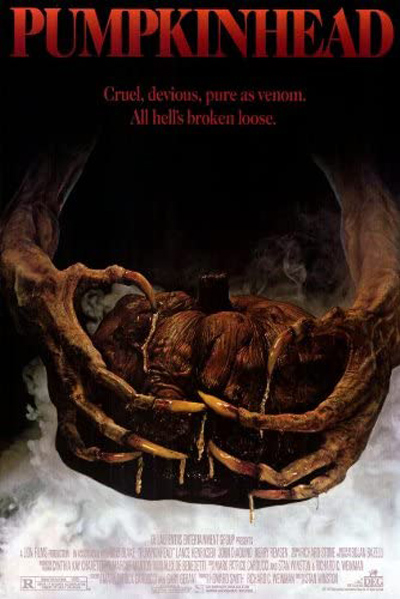
Mladen’s take
Del and I have been friends for a long time. And, still, he’s simply unable to judge the depth and breadth of my intolerance for inadequate moviedom mayhem, violence, and cussing.
“Pumpkinhead” is a good movie. I throw it an A- for the superb creature effects, which offset the movie’s quasi-“Deliverance” vibe. However, there are no dismemberments or intestines spilling from sliced abdomens. Shoot, plenty of blood is spilled, but no depictions of arterial pulse squirting. Sure as hell there is very little swearing, if any, that I recall and there is definitely no damned nudity. So, forgive me Del, but I’m whining, anyway, though, really, it’s closer to satisfied grumbling because the “Pumpkinhead” plot is solid.
In fact, I had little trouble overlooking the plot’s trigger, a grieving father mischaracterizing the city slickers’ accidental mistreatment of his geeky son. What unfolds is horror movie commentary on the ruin that engulfs those seeking revenge. For, you see, Ed the father becomes entwined with the monster he unleashes. When Pumpkinhead kills, Ed feels it.
—
Quick, what excellent recent movie uses the same type of symbiotic relationship between man and beast as an integral part of the story? Answer: “Sputnik.”
—
It’s Pumpkinhead who has me enamored by this late 1980s film. This is a lovingly, carefully, patiently, and nicely crafted terror animal. The only non-practical, i.e. without makeup, and non-mechanical visual effect in the movie is blurred and swaying filmography showing Ed sensing that Pumpkinhead is about to strike.
Pumpkinhead, by the way, is a tall guy in a costume. The creature is a decaying pink and skeletal. It has no hair, a tail, claws for hands, pseudo-hooves for feet, and long bony protrusions from the shoulders. Its legs at the knees bend like a heron’s, forward, if I recall accurately. Its teeth are long, crooked, and cracked and eyes white, opaque, and all-seeing. Pumpkinhead is a conjured beast, maybe risen from the fires of hell, making a living in the material world. Pay attention to the shrunken monster’s face when it’s re-buried.
Pumpkinhead’s interaction with reality as we understand it is very nicely executed in its namesake film.
There’s our nightmare walking past a window as though taking a leisurely stroll while the kid killers inside the cottage talk about what to do. When Pumpkinhead prowls through the house, it ducks beneath doorways. It swivels and tilts its head to listen. And, Pumpkinhead has no trouble looking straight at you while contemplating, I imagine, what to do next. It kills your ass and then hangs around for a moment to watch the reaction of your friends. There are no rampages. Just a methodical hunt to pick off the offending, big-hair youths. Wait till you see how the monster decides to handle a rifle. Pumpkinhead is scary as hell because it’s very human.
To me, Pumpkinhead has a subtler charisma than the Xenomorph in “Alien,” more natural finesse than the Predator in “Predator,” and a finer malevolence than Freddy in “A Nightmare on Elm Street.”
It’s my hope that no dumbass 21st century producer decides to re-make “Pumpkinhead.” This is a story and a monster that stand on their own. The beast borne of revenge shouldn’t be risked by a crappy re-do.
Mladen Rudman is a former journalist and technical editor. Del Stone Jr. is a former journalist and author.